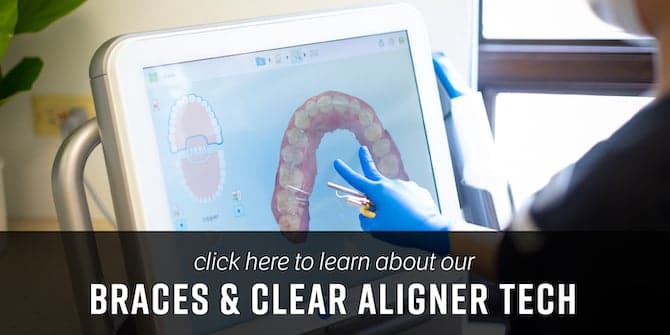What to Expect During Your First Orthodontist Appointment
Visiting the orthodontist for the first time can be a bit nerve-wracking, especially if you don’t know what to expect. Whether you’re considering braces, Invisalign, or just want to understand how to achieve a healthier, straighter smile, the first appointment is an important step in your orthodontic journey. This guide will help you feel prepared and confident by walking you through what typically happens during that first visit.
An Initial Consultation
Your first orthodontist appointment is usually a consultation where the orthodontist will assess your dental health and discuss potential treatment options. Here’s what you can expect:
- Welcome and Paperwork: When you arrive at the office, you’ll be greeted by the front desk staff. You’ll likely be asked to fill out some paperwork (if you haven’t completed it online already), including your medical and dental history, insurance information, and any concerns or questions you may have about your teeth or bite. This information helps the orthodontist understand your background and any specific issues they need to be aware of.
- Meet the Orthodontist: After the paperwork is done, you’ll meet the orthodontist and treatment specialist that’ll lead up your treatment. They’ll introduce themselves and take some time to get to know you, making sure you’re comfortable and relaxed. This is a great opportunity to ask any questions you might have about the process, treatments, or what to expect in the coming months.
- Oral Examination: The orthodontist will then perform a thorough examination of your mouth, teeth, and jaws. They will look for issues such as crowding, gaps, misaligned teeth, or bite problems. This examination will help them determine whether you need orthodontic treatment and what type would be most beneficial for you.
- X-Rays and Records: To get a more detailed understanding of your dental structure, the orthodontist may take X-rays or digital images of your teeth and jaw. These images allow them to see the position of your teeth and roots, as well as the relationship between your teeth and jawbones. Sometimes, impressions or digital scans of your teeth are also taken to create a model of your mouth. This helps in planning the treatment and allows the orthodontist to visualize the movement of your teeth throughout the process.
Discussing Your Best Treatment Options
After the examination and imaging, the orthodontist will discuss their findings with you. Here’s what usually happens during this phase:
- Diagnosis: The orthodontist will explain any dental issues they’ve identified (overbite, underbite, crossbite, open bite, overcrowding, spacing issues, etc.) and provide a diagnosis. Understanding your diagnosis is important because your treatment plan is based on it.
- Treatment Plan: Based on the diagnosis, the orthodontist will discuss possible treatment options. These could range from traditional metal braces to clear aligners like Invisalign. The orthodontist will explain the pros and cons of each option, how long the treatment is expected to take, and what kind of results you can expect.
- Costs and Financing: Once a treatment plan is discussed, the orthodontic team will go over the cost of treatment. They’ll explain what’s included, such as the cost of braces or aligners, appointments, retainers, and any additional fees. Many orthodontic offices offer financing options or payment plans to make treatment more affordable. At AOS, we work hard to ensure affordable care by providing several different payment options, such as interest-free financing or FSA. We can also help you navigate your insurance benefits.
- Questions and Answers: This is your chance to ask any questions you may have about the treatment plan, costs, or what to expect moving forward. It’s important to leave the consultation with a clear understanding of the process and feeling confident in your decision.
What Happens Next?
If you decide to move forward with treatment, the next steps will be scheduled. Here’s what you can expect:
- Treatment Start Date: Depending on your treatment plan, your orthodontist may set a date to begin treatment. For some, this might be the same day as the consultation, especially if the treatment involves simple applications like spacers. For others, it could be a few days or weeks later to allow time for customized aligners or preparation of other orthodontic devices.
- Regular Appointments: Orthodontic treatment requires regular follow-up appointments. These appointments are typically scheduled every 4-8 weeks and are crucial for adjusting braces, monitoring progress, and ensuring your treatment is on track.
- Home Care Instructions: Your orthodontist will provide instructions on how to care for your braces or aligners at home. This includes tips on brushing and flossing, foods to avoid, and how to handle any discomfort or emergencies. Following these guidelines will help ensure your treatment progresses smoothly and effectively.
- Commitment to the Process: Orthodontic treatment is a commitment, both in time and effort. It’s important to attend all your appointments and follow your orthodontist’s advice to achieve the best results. The process may take several months to a few years, but the end result—a beautiful, healthy smile—is well worth the effort.
Your first orthodontist appointment is a critical step in your journey to a healthier smile. It’s an opportunity to learn about your dental health, explore treatment options, and start planning for the future. By understanding what to expect, you can approach your appointment with confidence, knowing that you’re taking a positive step towards improving your smile and overall well-being. Remember, the team at your orthodontic office is there to support you every step of the way, making the process as smooth and comfortable as possible.





